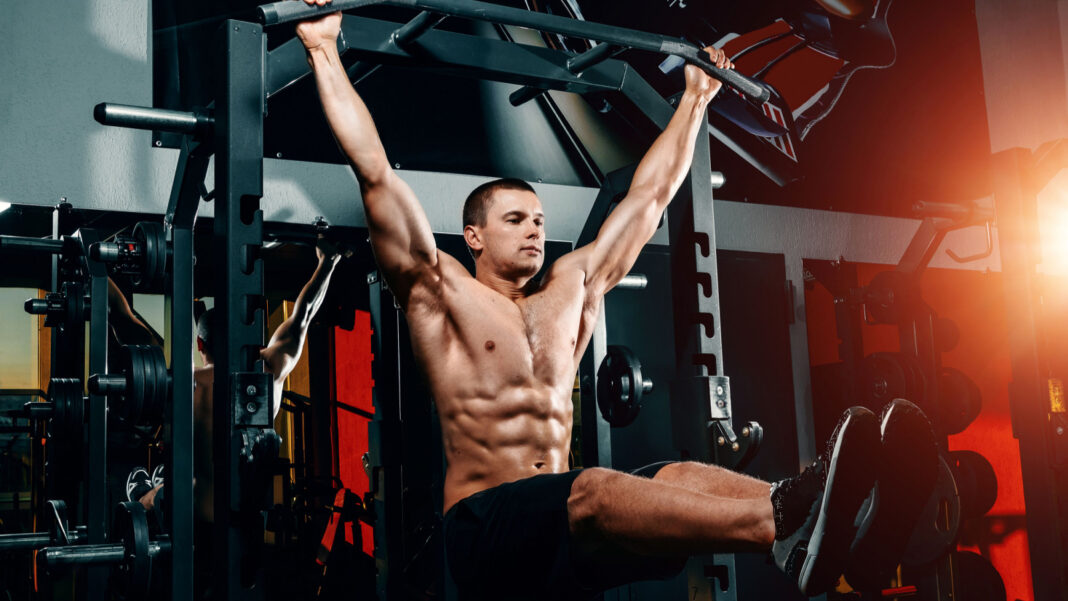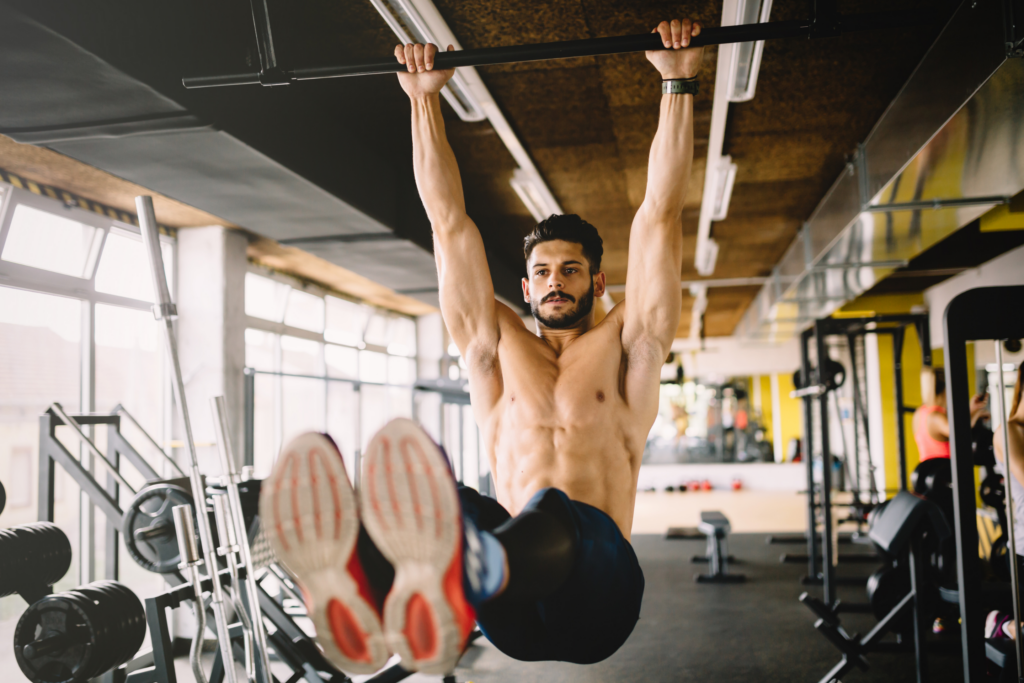Hanging Leg Raise Mastery: Build Lower Abs and Core Control That Shows
If there’s one move that separates core training rookies from disciplined lifters, it’s the hanging leg raise. Done right, it’s one of the best exercises for developing thick, lower ab definition and bulletproof core control.
Done wrong? It’s a leg-swinging, hip-flexor-dominant mess that does little for your abs and a lot for your ego.
This guide gives you everything you need to master the hanging leg raise — from form, progressions, and variations, to programming it into your routine whether you’re a beginner or an advanced lifter.
Why Hanging Leg Raises Are a Core Game-Changer
From a bodybuilder’s perspective, few movements offer this kind of payoff:
- Direct lower ab tension (where most guys struggle to build)
- Spinal and pelvic control under movement (better bracing for compound lifts)
- Scalability from beginner to advanced
- Transfer to improved posture and midline stability
Unlike crunches or sit-ups, hanging leg raises train your core through a full range, from stretched to contracted — while demanding scapular and grip engagement.
Anatomy: What Hanging Leg Raises Actually Target
Primary Muscles Worked:
- Rectus abdominis (lower section emphasis)
- Hip flexors (secondary)
- Obliques (during controlled tilt/twist variations)
🔧 Secondary Stabilizers:
- Transverse abdominis (bracing)
- Forearms/grip (bar hang)
- Lats and scapular stabilizers
Key takeaway: If you’re not actively controlling your pelvis and spine, the wrong muscles take over. This is what separates a true core movement from a flashy swing.
How to Perform the Perfect Hanging Leg Raise
✅ Step-by-Step Technique:
- Hang from a pull-up bar with arms extended, shoulder-width grip.
- Engage lats slightly to stabilize shoulder blades.
- Tilt your pelvis backward slightly (posterior pelvic tilt) — this activates your lower abs before you even move.
- Raise legs with control to at least parallel — ideally higher.
- Pause briefly at the top. Avoid swinging.
- Lower legs slowly with full control.
❌ Common Mistakes to Avoid:
- Using momentum to swing legs up
- Overreliance on hip flexors (no pelvic tilt)
- Loose scapular position (shoulders up in ears)
- Cutting the range of motion short
How to Build Up to a Hanging Leg Raise (Progressions)
Not strong enough yet to go full straight-leg? No problem — here’s how to earn it:
🔹 1. Bent-Knee Raise (Knee Tuck)
- Raise knees toward chest while keeping control
- Easier on hip flexors, focuses on core activation
🔹 2. Paused Bent-Knee Raise
- Add a 2–3 second pause at the top
- Forces core control, eliminates momentum
🔹 3. Partial Range Straight-Leg Raise
- Raise to 45–60 degrees, increase as strength allows
🔹 4. Full Range Hanging Leg Raise
- Controlled raise to parallel or higher
- Posterior pelvic tilt maintained
🔹 5. Toes-to-Bar
- Touch toes to bar with straight legs
- Requires excellent core tension and scapular control
🔹 6. Weighted Hanging Leg Raise
- Add ankle weights or small dumbbell between feet
- Increases overload for hypertrophy
Programming for Muscle and Mastery
Goal: Lower Ab Hypertrophy
- 3–4 sets of 10–15 reps
- Add light weight or tempo control to increase difficulty
Goal: Core Strength and Control
- 3–4 sets of 6–8 reps (slow, controlled)
- Add pauses, eliminate momentum
Goal: Endurance & Conditioning
- 2–3 sets to near failure (but never sloppy)
- Can be used as a finisher on leg or pull days
Where to Program Hanging Leg Raises in Your Split
🔁 Option 1: On Pull Day
- Superset with vertical pulls (e.g., pull-ups, lat pulldown)
- Aids grip and scapular engagement
🔁 Option 2: On Leg Day
- After squats or RDLs, include 2–3 core sets
- Reinforces anterior-posterior balance
🔁 Option 3: Dedicated Core Day
- Pair with ab wheel rollouts, planks, or Pallof presses
- Keep volume moderate and quality high
Practical Tips From a Bodybuilder’s Lens
- Treat it like any other lift: track reps, sets, and add weight over time
- Use a lifting belt for heavier compounds — but keep core training raw
- Don’t blast your core right before squats/deads — fatigue kills bracing
- Don’t rush progression. A perfect 8-rep leg raise > sloppy 20-rep swing
Hanging Leg Raise Variations for Variety and Progression
🔹 Toes-to-Bar
- More gymnastic, higher core + shoulder demand
🔹 Hanging Oblique Raise (Knees to Side)
- Targets obliques and hip control
🔹 Windshield Wipers
- Advanced rotational control exercise
🔹 Hanging L-Sit Hold
- Static isometric challenge for deep core
🔹 Decline Bench Leg Raise (Regression Tool)
- Great prep for beginners or high-rep finishers
Common Questions
🧠 Q: “Why do I feel this in my hip flexors more than my abs?”
A: You’re likely missing the posterior pelvic tilt. Engage lower abs before raising legs.
🧠 Q: “Is it okay to bend my knees?”
A: Absolutely — especially if you’re building strength or learning control. Bent-knee = regression, not cheating.
🧠 Q: “How many times a week should I train this?”
A: 2–3x per week is ideal. Always allow 48 hours between sessions to recover.
🧠 Q: “Do I need to go toes-to-bar for it to count?”
A: No. Going above parallel with control is highly effective. Only go higher if you can maintain tension and form.
Final Word: Hanging Leg Raises Separate the Serious from the Casual
If you want sculpted lower abs that do more than look good — that actually perform under the bar — then you need to master hanging leg raises.
It’s a skill lift. It demands control. And when done right, it delivers a level of core strength that carries into every other part of your training.
No more mindless crunches. No more weak underdeveloped midsections.
Train your hanging leg raise with intent, and your physique will show the difference.




